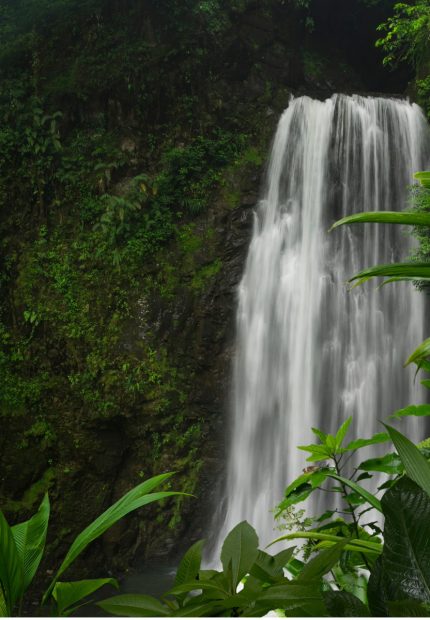
Do I Need to Speak Spanish to Travel in Central America?
Central America is a real adventure. From hiking up volcanoes to exploring the cloud forests or from surfing the Pacific waves to diving in the Caribbean, there’s no shortage of things to do and see. But, like us, you may be wondering ‘Do I Need to Speak Spanish to Travel in Central America?’.
Well, don’t worry. We’ve been there, and done that, and we’re here to share exactly how much Spanish you will (or won’t) need in each of the countries you’ll pass through.
Know where you’re going? Only visiting one or two Central American countries? Jump right in with any of the links below:
- Do I Need to Speak Spanish to Travel in Panama?
- Do I Need to Speak Spanish to Travel in Costa Rica?
- Do I Need to Speak Spanish to Travel in Nicaragua?
- Do I Need to Speak Spanish to Travel in Honduras?
- Do I Need to Speak Spanish to Travel in El Salvador?
- Do I Need to Speak Spanish to Travel in Guatemala?
- Do I Need to Speak Spanish to Travel in Belize?
- Do I Need to Speak Spanish to Travel in Mexico??
WHY VISIT CENTRAL AMERICA?
Sandwiched between the larger regions of North and South America, small Central America really packs a punch. With lush rainforests, volcanic landscapes, and breathtaking coastlines, there’s just so much to do. Its cultural heritage is equally captivating, with indigenous traditions interwoven with colonial influences.
Although Panama’s canal, Costa Rica’s eco-tourism, and Mexico’s Mayan pyramids and beach resorts are firmly on the map, the rest of Central America’s many treasures are only now beginning to get the attention they so rightly deserve.
Perhaps it’s because of the region’s dangerous reputation? Or lack of major tourist infrastructure outside of Panama/Costa Rica? Or maybe that once you leave the main tourist trail, there’s very little English spoken. But we think this makes Central America all the more exciting!
Ready to book your trip? Like us, you may be wondering ‘Do I Need to Speak Spanish to Travel in Central America?’. I certainly didn’t speak Spanish before our trip, and Marius had the basics, but nothing that would lead to a deep conversation. In this post, we’ll share exactly how much you need to speak Spanish to travel in Central America, from Panama to Mexico.
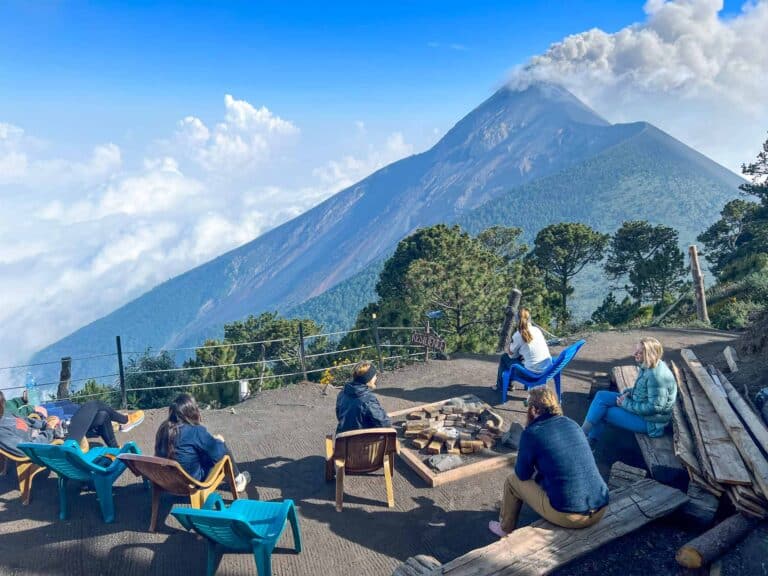
Making friends in Guatemala: a mix of French, Belgian, UK, German, and Australian travellers
DO I NEED TO SPEAK SPANISH TO MAKE FRIENDS IN CENTRAL AMERICA?
You might be wondering, do I need to speak Spanish to travel in Central America? Will this hinder me in making friends?
Good news! You definitely won’t need Spanish to make friends on the road in Central America.
We found that most backpackers in Central America were from the USA or Europe. English is the main language used in hostels and will be enough to make friends with other backpackers. You might even be able to band together with hostel pals who do have some Spanish and travel together. This will give you a much easier time!
If you’re from Germany, France, the Netherlands, or Israel, you’re in luck! We met a lot of backpackers from these countries. It was super common to see travellers from these countries grouping up and hanging out in their native languages across the region.
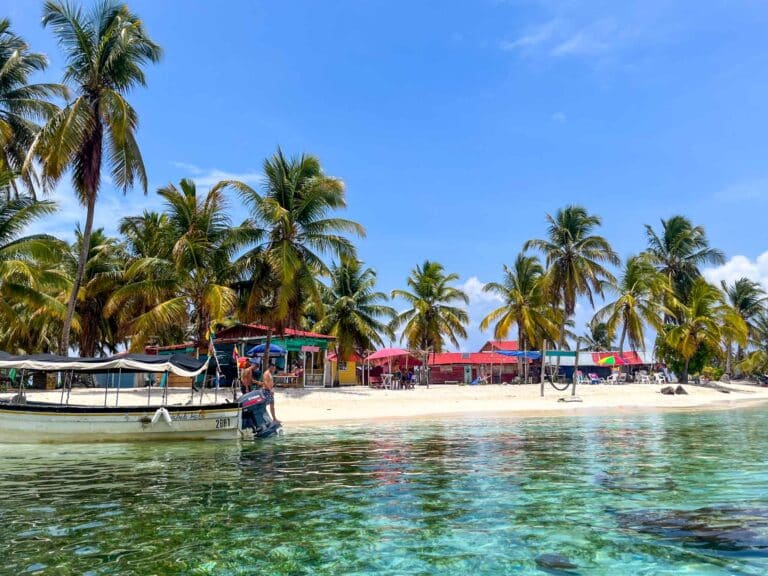
Panama’s San Blas Islands
DO I NEED TO SPEAK SPANISH TO TRAVEL IN CENTRAL AMERICA?
Before we dive in to each of the countries, let’s talk.
No matter where you go, it is always polite to learn some of the local language. This can be as simple as four phrases: ‘hello’, ‘goodbye’, ‘please’ and ‘thank you’. Learning the very basics shows that you’re making an effort. Locals will, more often than not, instantly warm to you. You might get smiles, better prices, or people might be more amicable and helpful towards you.
At the very least, learning these four basic phrases helps to stop you from falling into the stereotype of ‘ignorant Brit’ or ‘ignorant American’. Because let’s face it, most of us with English as our native tongue are downright lazy when it comes to language learning.
So, pick up Duolingo or your preferred language app, and invest a little time in learning some basic Spanish. Even if it’s just doing a few lessons on the flight over. It’s a free resource, you’ve got no excuse not to!
DO I NEED TO SPEAK SPANISH TO TRAVEL IN PANAMA?
We’ll start with Panama because it was the first country we visited during the months we spent travelling from Panama to Mexico overland. Often considered the boundary between North and South America, Panama is best known for its iconic canal, which revolutionised global trade. It’s easy to get around Panama City with limited Spanish due to the city’s long-standing relationship with the USA.
But there’s a lot more to Panama than just Panama City. Journey to the stunning Caribbean Islands of the San Blas Peninsula for a relaxing beach break. Or, head to the highlands of Boquete for hiking and birdwatching amidst cloud forests (check out our favourite hostel on the way!). If you’re planning to leave Panama city, you might be wondering do I need Spanish to get around in Panama?
Spanish Needed: Not really! While knowing some Spanish enhances your experience, particularly when interacting with locals, you can navigate Panama comfortably with English in most tourist areas and major cities. I didn’t speak any Spanish at the start of our Central America trip, and we got around just fine.
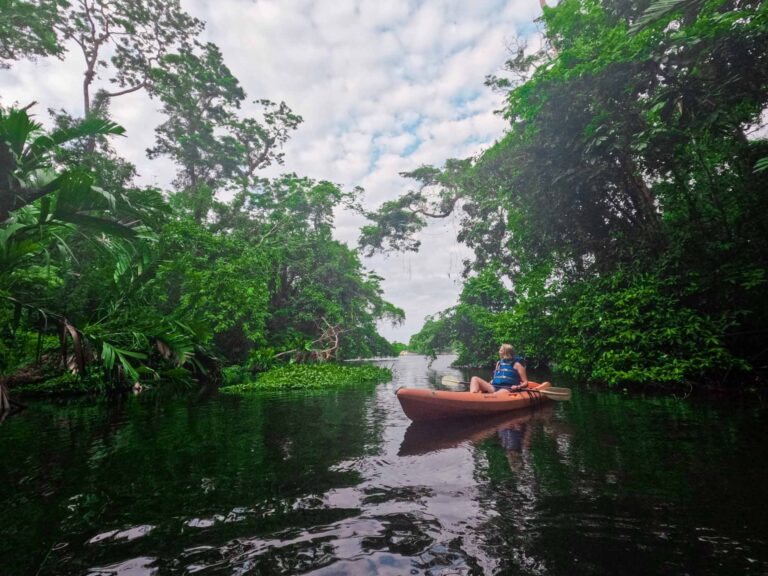
Kayaking in Costa Rica’s Tortuguero National Park
DO I NEED TO SPEAK SPANISH TO TRAVEL IN COSTA RICA?
Costa Rica, often hailed as the “Switzerland of Central America,” is celebrated for its commitment to sustainability and biodiversity. With over a quarter of its land protected as national parks and reserves, Costa Rica calls to nature enthusiasts and eco-travellers.
Known for being the safest country in Central America, Costa Rica is incredibly popular with travellers from the USA looking for a tropical escape. There’s tons to do here, from exploring Costa Rica’s 28 National Parks, zip-lining through the Monteverde Cloud Forest, watching turtles hatch in Tortuguero National Park, or unwinding on one of Costa Rica’s many beaches.
Spanish Needed: Absolutely not! We’d say Costa Rica is the easiest country to explore with limited Spanish. Many locals speak English, especially in tourist areas. Whilst knowing basic Spanish can enrich your encounters with Costa Rican culture and enhance your exploration of off-the-beaten-path destinations, it’s not essential!
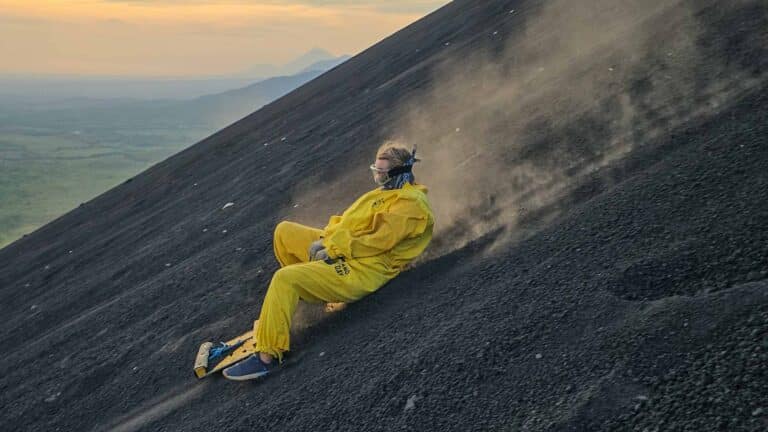
Volcano Boarding in Nicaragua
DO I NEED TO SPEAK SPANISH TO TRAVEL IN NICARAGUA?
Nicaragua, the largest country in Central America, was up there with our favourites! From surfing to zip-lining, Nicaragua has everything that Costa Rica offers for less than half of the price. Renting a scooter to drive around the lush forested Isla de Ometepe is one of my fondest travel memories. And the thrill of surfing down an active volcano on a wooden sledge should be enough to make anyone put this country on their bucket list.
Nicaragua also has its fair share of cute, artsy cities just begging to be discovered. Explore the colonial charm of Granada, where colourful buildings line cobblestone streets. Or wander through the vibrant markets of Masaya, renowned for its handicrafts and folk art. Leon, with its fun youthful vibe and nearby surf scene, is also well worth a visit, and a must if you want to board down an active volcano!
You’ll notice the difference as you cross the border from Costa Rica. Nicaragua is less developed and caters less to tourists, although it is nudging its way onto the main backpacker trail! Spanish is the primary language spoken, especially in rural areas. If you’re hoping to get around using the famous ‘chicken buses’, you’ll want to have some basic Spanish phrases and gestures under your belt.
Spanish Needed: Probably! Nicaragua is still ‘off the beaten path’, considered ‘too dangerous’ for many travellers, although we had no issues here. The backpacker scene is amazing! But this does mean that the country caters less to English-speaking tourists looking for an easy vacation.
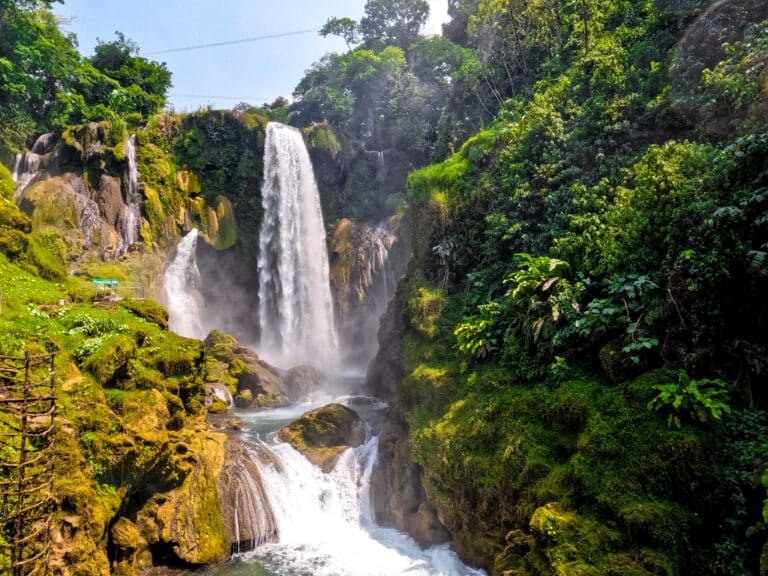
Pulhapanzak waterfalls in Honduras
DO I NEED TO SPEAK SPANISH TO TRAVEL IN HONDURAS?
Big reputation, big reputation. Ooh, you and me, we got big reputations. Honduras, nestled in the heart of Central America, has a bad reputation but a good heart. The ‘bad boy’ of Central America deserves your respect, yes. But if you play by the rules (avoid larger cities, don’t flash your valuables, and take a taxi after dark), it’s not inherently more dangerous than elsewhere in Central America.
Once you get over Honduras’ reputation, there’s tons to discover! Jump into the crystal-clear waters of the Bay Islands, renowned for world-class diving and snorkelling among vibrant coral reefs. Explore the archaeological wonders of Copan Ruinas, where intricately carved Mayan ruins offer a glimpse into ancient civilizations. And discover Lake Yojoa, with its rare bird species, waterfalls and coffee plantations.
Spanish Needed: Yes, definitely! Spanish is the predominant language spoken, especially outside of major tourist areas such as the Bay Islands. You’ll need basic Spanish phrases and gestures to successfully navigate Honduras with confidence. We were so glad for our limited Spanish skills (and our fluent friend, Hanna, whom we picked up along the way!). Plus, some Spanish will help you get along with the locals, who are some of the kindest and most genuine people in Central America.
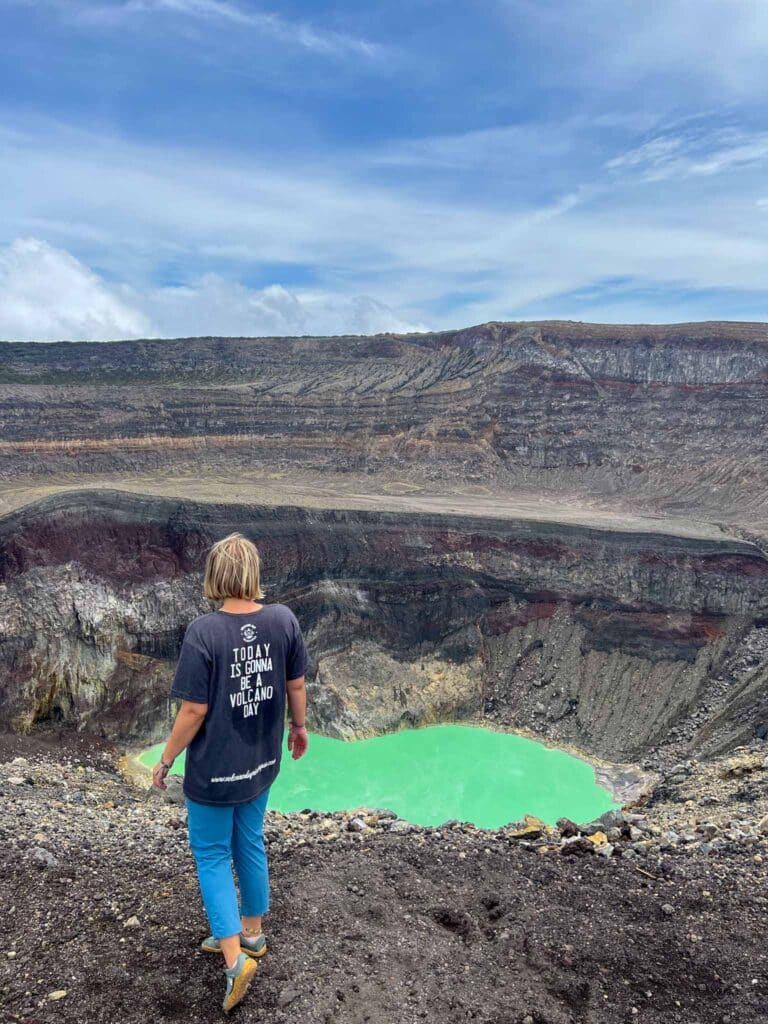
Santa Ana Volcano El Salvador
DO I NEED TO SPEAK SPANISH TO TRAVEL IN EL SALVADOR?
El Salvador, the smallest country in Central America, packs a punch with its volcanic landscapes and budget-friendly Pacific coast culture. Discover the colonial charm of Suchitoto and Atako, where cobbled streets lead to art galleries and historic churches. Embark on a scenic hike up Santa Ana Volcano for panoramic views of the surrounding countryside. Taste coffee fresh from the plantation on the Ruta de las Flores. Stuff your face with El Salvador’s national snack: the pupusa! Or surf the legendary waves of El Tunco along the country’s rugged coastline.
With a recent civil war, high crime rates and gang violence, El Salvador was ‘the most dangerous country in the world’ for a time. But the current president has turned things around. The country known for having the highest murder rate is now becoming known for its sunsets, volcanoes, beaches, and excellent waves! And despite its relatively recent rocky past, the people in El Salvador were some of the kindest. They really looked out for us.
Of course, we couldn’t have had those experiences without some level of Spanish! After travelling around four Central American countries (plus a quick trip to South America to visit Peru!), we’d picked up some basics.
Spanish Needed: Yes, definitely! Spanish is the official language of El Salvador and not many locals (outside of the tourist industry) speak English. Travellers can navigate El Salvador with basic Spanish phrases, especially in urban areas. Honduras and El Salvador were two of the countries where we really got to hang out with local people. Engaging with locals in their native language fosters meaningful connections and enhances the overall travel experience for sure!
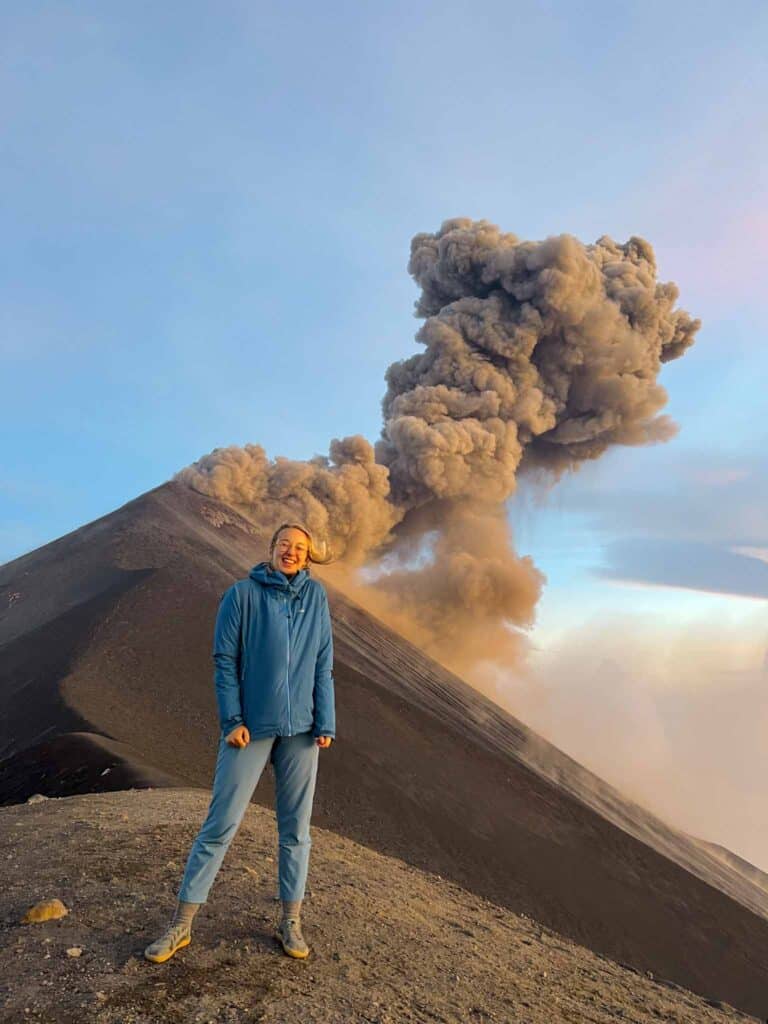
Less than 1km from an actively erupting volcano in Guatemala
DO I NEED TO SPEAK SPANISH TO TRAVEL IN GUATEMALA?
Ahh ‘Guate’, the country I was most excited about visiting. Guatemala boasts a tapestry of landscapes, from the towering volcanoes of Antigua to the jungle and ancient Mayan ruins of Tikal. There’s so much to do and see here. From watching a volcano erupt all night, visiting traditional markets in Chichicastenango or exploring the vibrant villages around Lake Atitlán, you won’t be bored.
I’m assuming that if you’re reading this, you probably don’t speak Spanish. But maybe you want to learn? Well, Guatemala has cemented itself firmly as the destination to learn Spanish. Antigua, with its cobblestone streets and colonial architecture, not only offers a glimpse into Guatemala’s colonial past. It’s also home to many of Guatemala’s budget-friendly Spanish schools.
With cute boutique hostels, Antigua is the perfect place to settle for a few weeks. There’s plenty to do, see, and eat whilst you take your Spanish class! If you’ve been through Honduras and El Salvador, you’ll definitely be looking forward to Antigua’s foodie scene and nightlife (yes, I love pupusas, but there’s only so many a girl can eat). You can also take Spanish classes in the villages around Lake Atitlan too
Spanish Needed: Depends where you’re going… Guatemala is making a name for itself as a popular tourist destination and the level of Spanish needed reflects that. Unless you’re crossing the border in weird places or diverting from the well-established gringo trail, you should be able to navigate most of Guatemala with basic English. Spanish will be useful if you’re planning to a) take a lot of public transport or b) leave the main tourist route.
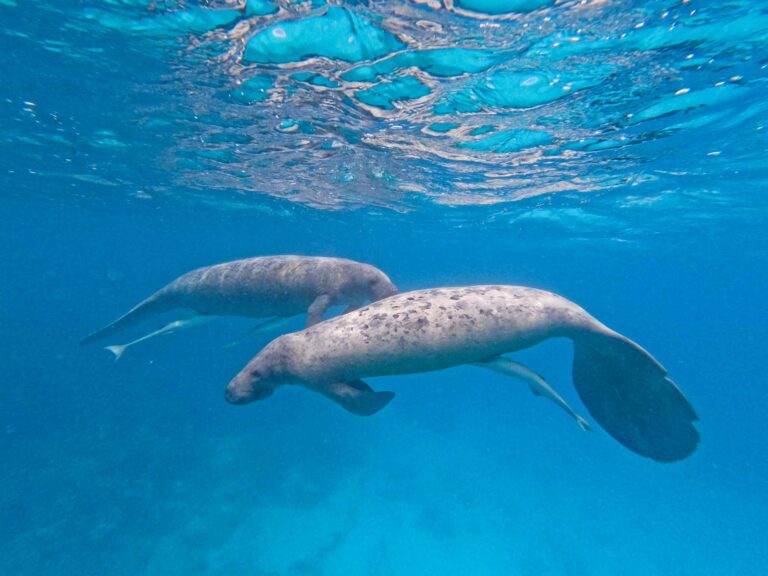
Swimming with manatees in Belize
DO I NEED TO SPEAK SPANISH TO TRAVEL IN BELIZE?
Bordered by the Caribbean Sea, Belize is a paradise for diving enthusiasts and beach lovers. Most travellers head out to the coast, hopping on a boat to Caye Caulker or Ambergris Caye. Here, you can explore the world’s second-largest barrier reef, dive in the blue hole, snorkel with sharks and swim with manatees.
Belize also has tons to do inland. Discover ancient Maya sites like Xunantunich and Caracol, nestled within lush rainforests. Or book a tour of the Actun Tunichil Muknal cave, a natural cenote where Mayan sacrifices took place.
Formerly a British Colony, Belize gained independence from the Brits in 1964. However, the official language is still English, with Belizean Creole widely spoken. This means that you don’t need to speak Spanish at all!
Belize felt like a breath of fresh air. My ‘survival’ Spanish is limited. I can get by, and communicate my wants/needs. But I don’t speak Spanish well enough to really foster those connections with local people. Belize felt like the first time in months that I was able to express myself fully! It was great!
Spanish Needed: Not at all! English is the official language of Belize, making it an accessible destination for travellers without Spanish proficiency. However, learning a few Spanish phrases can enhance your interactions with locals, especially in rural communities/near the borders with Guatemala and Mexico.

Exploring Bacalar in Mexico
DO I NEED TO SPEAK SPANISH TO TRAVEL IN MEXICO?
Mexico is a big country! For the sake of this guide (and since we only visited the South), we’re classing it within the region of ‘Central’ America’ (although technically all the countries here sit on the North American continent). We’re also just talking about Yucatan here, we can’t speak for the rest of Mexico as we didn’t have enough time (yes, we are going to go back one day!)
The Yucatan Peninsula, a gateway to Mexico’s rich cultural heritage, entices travellers with its archaeological wonders and sun-kissed beaches. It’s home to Chichen Itza, a UNESCO World Heritage Site renowned for its iconic pyramid. You can dive into the crystal-clear waters of cenotes, natural sinkholes unique to the region, or relax and unwind on the beaches of Isla Holbox.
Spanish Needed: Depends where you go… While Spanish is the official language of Mexico, English is widely spoken in tourist areas, allowing visitors to navigate the Yucatan Peninsula comfortably. If you’re travelling off the beaten path, or outside of the Yucatan peninsula, you may find Spanish helpful.
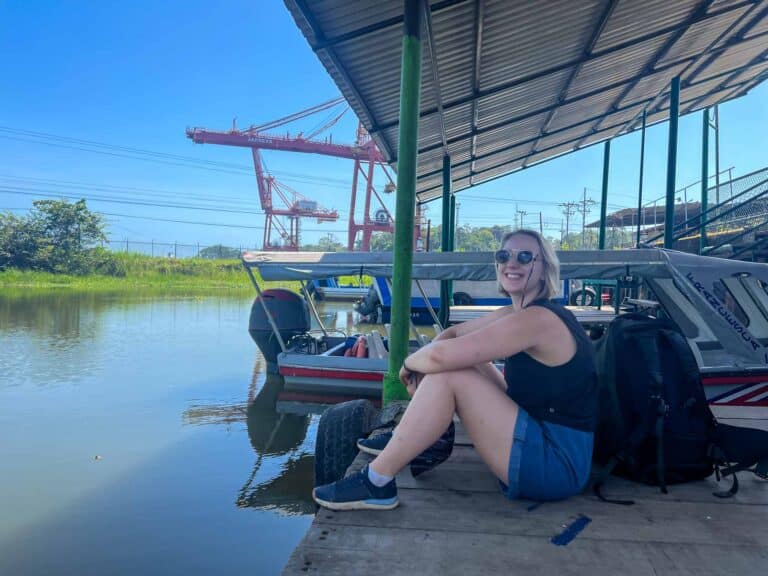
Speaking Spanish definitely helps when you want to get on a random boat!
SO, DO I NEED TO SPEAK SPANISH TO TRAVEL IN CENTRAL AMERICA?
English is widely spoken in tourist areas and accommodations, allowing travellers to navigate the region comfortably. Speaking Spanish is not a prerequisite for travelling in Central America. However, learning a few basic Spanish phrases can enhance interactions with locals, open doors to authentic experiences, and enrich your adventure. Some Spanish skills will help you to navigate this region with ease, and possibly lower your chances of being scammed.
Whether you’re exploring ancient ruins, lounging on sun-drenched beaches, or embarking on adrenaline-pumping adventures, Central America will welcome you with open arms. And that’s regardless of your language proficiency. If you don’t speak Spanish, don’t let it hold you back! You’ll be just fine. We promise!
LIKE IT? PIN IT!
SAVE THIS POST TO YOUR PINTEREST BOARD TO COME BACK LATER
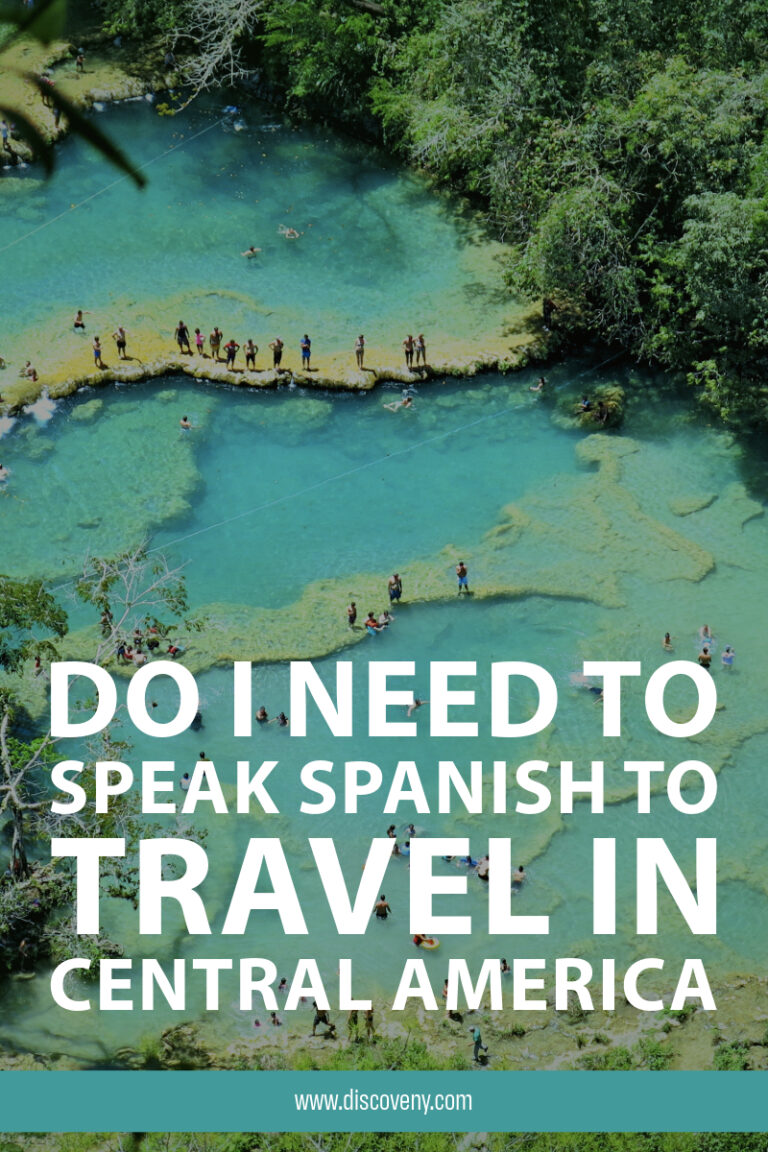

Follow our daily adventures on Facebook and Instagram
Disclaimer: The information and advice provided in this blog are the author’s opinions and based on their personal experiences. All information was accurate at the time of writing. However, things can change quickly, so always double-check current conditions and guidelines before setting out. Remember, your travels and safety are your own responsibility, and this blog can not be held responsible for anything that might happen on your adventures! Always exercise caution and good judgment. Oh, and don’t forget to get travel insurance! Happy travels!
This post may contain affiliate links (yay for transparency!) This means that I will earn a small commission, at no additional cost to you, if you click the link and choose to buy the product. I only link to stuff I have personally bought and found useful and never endorse crap. Your support helps keep the site going, thank you!
Alice
Alice is a UK travel blogger who advocates sustainable travel and being more eco-conscious on a budget. She loves coffee, her houseplants and summiting mountains.
You May Also Like
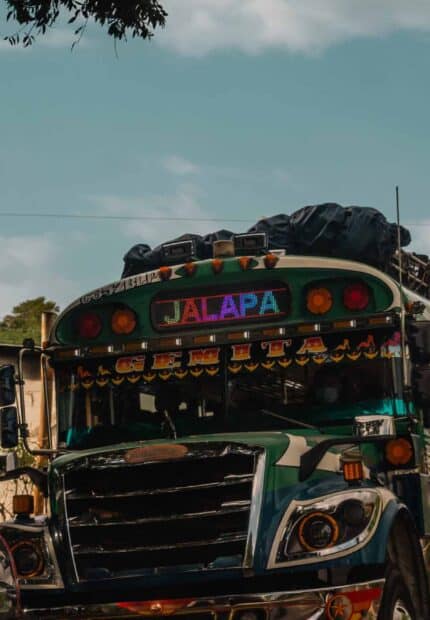
Chicken Buses in Central America: The Ultimate Guide
October 1, 2023
Catching Chicken Buses in Central America: 17 Things You Should Know
October 7, 2023